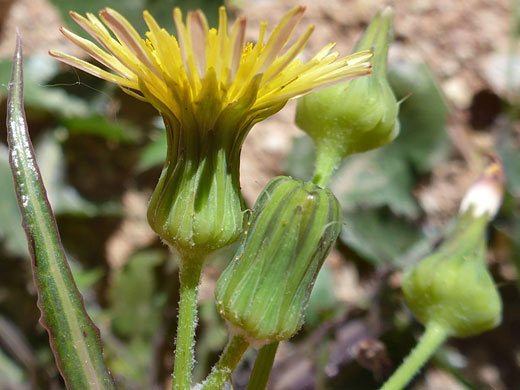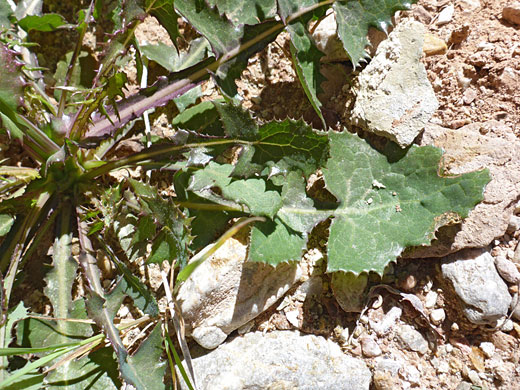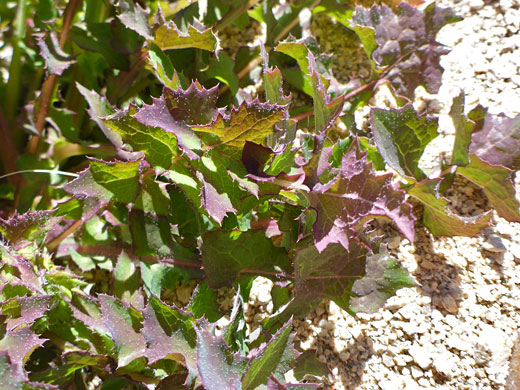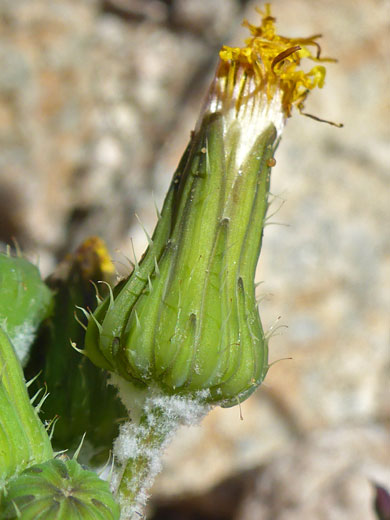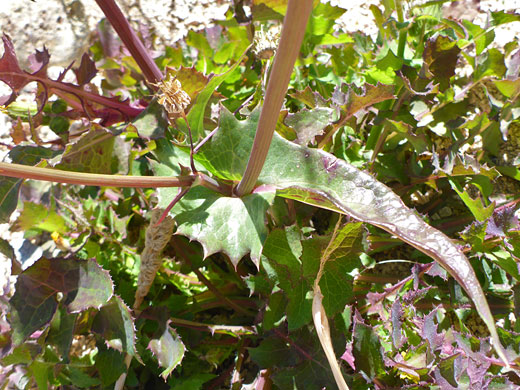Common name:
Common sow thistle
Family:
Scientific name:
Sonchus oleraceus
Main flower color:
Range:
All the western states; most common in the south and far west (non native)
Height:
Up to 5 feet
Habitat:
Streambanks, roadsides, fields, disturbed locations, from sea level to 6,000 feet
Leaves:
Up to 10 inches long; divided into toothed lobes, attached by winged petioles
Season:
February to June
Like all species of its genus, sonchus oleraceus originates in Europe, Asia and Africa; it has become naturalized in all US states, and is most widespread in Arizona and California. Leaves grow at the base, and along the stems, where they are somewhat longer. All leaves are divided into a large, arrow-shaped terminal lobe and several opposite pairs of lateral lobes, all lined by sharp, irregular teeth. Stems may branch a few times above the middle.
Flowerheads are attached by stalks of up to 2 inches; these may be hairless, or sparsely covered by either short, bristly, glandular hairs or softer, woolly hairs. The involucre is widest towards the base, constricted above, and lined by three rows of appressed phyllaries, glabrous or sparsely bristly-hairy. The ligulate florets are yellow above, partly pinkish below. Plants can bloom any time of the year, but spring and summer are the most common seasons.
Flowerheads are attached by stalks of up to 2 inches; these may be hairless, or sparsely covered by either short, bristly, glandular hairs or softer, woolly hairs. The involucre is widest towards the base, constricted above, and lined by three rows of appressed phyllaries, glabrous or sparsely bristly-hairy. The ligulate florets are yellow above, partly pinkish below. Plants can bloom any time of the year, but spring and summer are the most common seasons.
All Contents © Copyright The American Southwest | Comments and Questions | Contribute | Site Map


